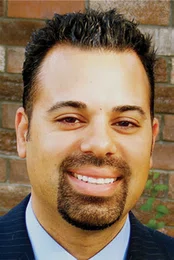Sports take on new importance as students reconnect with school
Guest Column by Naj Alikhan
May 3, 2021

This brings up a new challenge for educators at all levels and adds a wrinkle to the social and emotional wellness of students. When the next academic year begins, how do we go about reconnecting students to schools that they haven’t physically been in for more than a year?
I’ve been a girls soccer coach for more than 10 years but never at the high school level until now. This spring, I jumped at the opportunity to coach the junior varsity girl’s soccer team at Elk Grove High School in the Elk Grove Unified School District.
Normally my role as a coach would be figuring out formations and building lineups. However, I’ve realized that my role is much bigger this season. I’m also a bridge for those students who haven’t stepped on the school campus. Ever.
Only four of my 15 players are participating in on-campus learning, which means the only physical connection to the high school for most of my players is late afternoon soccer practices. For those players, I may be the only adult they physically see from their school.
I’ve been reading about strategies being used by educators, and many of the tactics are either designed for younger students or are long-term campaigns that last several months. The time with my players is finite: I only have a few minutes to make a connection before we have to get to work.
I’ve had to pivot. I am normally the coach who is structured with scouting reports and statistics, practice plans timed to the minute and strategies implemented for every possible game scenario. The pivot for me has been taking cues from my players. They want to feel normal, interact with each other, laugh and enjoy their time together. They want to be people.
Practices now begin with me individually checking in with each player as they arrive at the field. I ask how the school day went, how their families are doing and what’s happening that evening or over the weekend. When we gather together, I try to give them a moment of levity with an anecdote about my work or what’s happening at my house. Then we’re off and running.
The players are serious about the success of the team and the school they represent. You can see it during practice, where there is high effort and a desire to improve. They mix it up and challenge each other, whether it’s a full-team scrimmage or sprints at the end. Yet they are also smiling, laughing and supporting each other in a way that should make all of us proud.
Even my team captain is a departure from my standard way of doing business. She is an excellent player, a hard worker and someone I hope the team can depend on for direction and inspiration through the season. But she is also the one who laughs the most and creates a relaxed environment for the players.
At the end of practice, I leave the floor to them. I ask them what we did well. Then I ask them what we need to accomplish at the next practice or the next game. This is their team as much as it is mine, and I want them to have as much input as possible.
ACSA Executive Director Wes Smith often says, “If we haven’t learned anything from the pandemic then shame on us,” and I think he is absolutely correct. I’m learning that reconnecting our students to campus will come in many shapes and sizes, and we need to be fluid in how we support them. This concept may not work for everyone, but it’s the strategy I am going to continue using.
I only have five weeks left in the season, but like many of you, the challenge of physically reconnecting students to their schools and classrooms will be ongoing. How are you doing it? How are you making it work? Please send me your suggestions and best practices so we can collect them and make them available on the ACSA Resource Hub and in EdCal.
Naj Alikhan is ACSA’s Senior Director of Marketing & Communications. Reach him at nalikhan@acsa.org.



